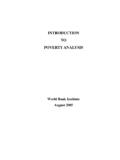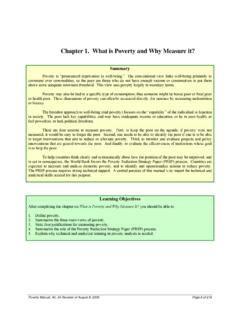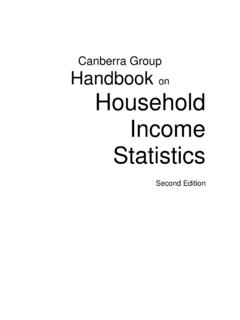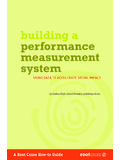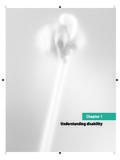Transcription of ORGANIZATION ANALYSIS AND DEVELOPMENT
1 4 LEARNING MODULE 4. ORGANIZATION ANALYSIS . AND DEVELOPMENT . ORGANIZATION ANALYSIS . AND DEVELOPMENT . Mariagrazia Rocchigiani Office of Partnerships, Advocacy and Capacity DEVELOPMENT (OPC) FAO. Denis Herbel Social Protection Division (ESP) FAO. Food and Agriculture ORGANIZATION of the United Nations Rome, 2013. With the support of the Ministry for Agriculture, Food Processing and Forestry of France Paris, 2013. ACKNOWLEDGMENTS. This learning module represents the culmination of an interdepartmental process of exchange and reflection. In 2012, the authors organized a series of seminars which gave FAO's staff the opportunity to explore and critically discuss current and past approaches on organizational strengthening used by FAO.
2 And other DEVELOPMENT organizations. We would like to thank all the participants of the FAO Organizational DEVELOPMENT (OD) Seminar Series who contributed their active participation and competency to the richness of the discussions. Particular thanks go to the OD Seminar Series resource people for their engagement: Astrid Agostini, Magdalena Blum, Marco Boscolo, Jennifer Braun, Giulio Caperchi, Eve Crowley, Olivier Dubois, Aziz Elbehri, May Hani, Tomas Lindemann, Bjorn Liungqvist, Ewald Rametsteiner, Nadir Tayeb and Klaus Urban. Special thanks go to the FAO peer reviewers Edwin Barasa, Sally Berman, Magdalena Blum, Marco Boscolo, Guenther Feiler, Nora Ourabah Haddad, David Kahan, Patrick Kalas, Cecilia De Rosa, Stephen Rudgard, Bernd Seiffert and Ilaria Sisto who helped to enrich this material.
3 In particular, thanks to David Kahan and Stephen Rudgard who engaged in several discussions and helped to sharpen the preliminary material. We are also grateful for the support provided by the FAO RIPE Team and especially to the team leader, Dr. Carol Djeddah. The authors are also very grateful to the external peer reviewers who provided valuable advice Beatina Theopold (USAID), Meena Munshi (World Bank), Andrew Russell (UNDP) and to the FAO Regional Offices for the Near East and for Asia and Pacific. We would like to thank Dubravka Bojic, Mauro Bottaro, Arianna Carita, Vito Cistulli, Rosalud De La Rosa, Riccardo del Castello, Jacqueline Demeranville, Yon Fernandez De Larrinoa, Boris Gandon, Charlotte Goemans, Carina Hirsch, Johanna Jelensperger, Susan Kaaria, Daniela Kalikovski, Regina Laub, Benali Marwan, Rao Matta, Emma Louise McInerney, Christiane Monsieur, Annamaria Pastore, John Preissing, Neal Pronesti, Diego Recalde, Andrea Sanchez-Enciso, Saifullah Sayed, Am lie Solal Celigny, Sophie Treinen, Igor Vinci, Rob Vos, Peter Wobst for their useful suggestions and support.
4 Special appreciation goes to Brett Shapiro for the editorial work and to Skiprock Creative for the visual design of the module. The designations employed and the presentation of material in this information product do not imply the expression of any opinion whatsoever on the part of the Food and Agriculture ORGANIZATION of the United Nations (FAO) concerning the legal or DEVELOPMENT status of any country, territory, city or area or of its authorities, or concerning the delimitation of its frontiers or boundaries. The mention of specific companies or products of manufacturers, whether or not these have been patented, does not imply that these have been endorsed or recommended by FAO in preference to others of a similar nature that are not mentioned.
5 The views expressed in this information product are those of the author(s) and do not necessarily reflect the views or policies of FAO. FAO, 2013. FAO encourages the use, reproduction and dissemination of material in this information product. Except where otherwise indicated, material may be copied, downloaded and printed for private study, research and teaching purposes, or for use in non-commercial products or services, provided that appropriate acknowledgement of FAO. as the source and copyright holder is given and that FAO's endorsement of users' views, products or services is not implied in any way. All requests for translation and adaptation rights, and for resale and other commercial use rights should be made via or addressed to FAO information products are available on the FAO website ( ) and can be purchased through TABLE OF CONTENTS.
6 Acknowledgments 1. Acronyms 7. Foreword 9. Overview and objectives 10. Introduction 11. chapter 1 - ORGANIZATION ANALYSIS 19. The basic framework for ORGANIZATION ANALYSIS 20. Organizational Performance Assessment (OPA) framework 21. The process for ORGANIZATION ANALYSIS 35. chapter 2 - ORGANIZATION design and implementation 43. What is ORGANIZATION design? 44. What are the most common interventions? 46. Planning and implementing an ORGANIZATION change process 54. chapter 3 - Engaging in multistakeholder processes 63. What is a multistakeholder process? 64. Types of multistakeholder processes 66. Setting up an MSP 72. chapter 4 - Measuring organizational change 81.
7 What level of change are we targeting? 82. Measuring performance in a target ORGANIZATION 83. Measuring results of a multistakeholder process 89. Setting up a measurement process 90. 3. TABLE OF CONTENTS. chapter 5 - toolbox 99. Toolset 1: Organizational Performance Assessment (OPA) 102. Tool 1: OPA checklist light version 106. Tool 1a: OPA in-depth checklist Performance criteria 108. Tool 1b: OPA in-depth checklist - Organizational Motivation 110. Tool 1c: OPA In-depth checklist Organizational capacity 112. Tool 1d: OPA in-depth checklist External environment 122. Exercise 1: Assessing readiness 127. Exercise 2: Thinking about performance 128. Exercise 3: Brainstorming on key factors 129.
8 Exercise 4: ORGANIZATION biography 130. Tool 2: Strengths, weaknesses, opportunities and threats (SWOT) ANALYSIS 132. Tool 3: Political, economic, social and technological (PEST) ANALYSIS 134. Tool 4: Stakeholders' mapping 136. Tool 5: Needs-Fears mapping 138. Tool 6: Rights, Responsibilities, Revenues and Relationships (4Rs) 141. Tool 7: The Organizational Culture Assessment Instrument (OCAI) 143. Tool 8: Brainstorming 148. Tool 9: Using appreciative inquiry for ORGANIZATION DEVELOPMENT 150. Exercise 5: Appreciative inquiry for a staff meeting 151. Tool 10: Visioning exercise 152. Exercise 6: Beginning to bridge the gaps 155. Tool 11: Scenario building 156.
9 Tool 12: Business process reengineering (BPR) 158. Tool 12a: Flow chart technique 159. Tool 13: Force field ANALYSIS 160. Tool 14: Open space 161. Tool 15: World caf 162. Tool 16: Using Socratic questions 164. Tool 17: Collaboration/planning/problem solving meetings 166. Exercise 7: Completing a self-assessment matrix for performance issues 168. Exercise 8: Developing indicators 169. Tool 18: Balanced scorecard methodology 170. Tool 19: Benchmarking 172. Tool 20: Combining quantitative and qualitative evaluation techniques 174. Appendix 1 - Common models of ORGANIZATION ANALYSIS and design 180. Glossary of key terms 182. References 184. List of boxes List of figures List of tables 4.
10 LIST OF BOXES. Box 1 - Learning modules (LM) for capacity DEVELOPMENT in FAO 10. Box 2 - Components of organizational capacities 23. Box 3 - FAO's organizational assessment experience: testing GAIN in Cameroon 25. Box 4 - Components of organizational motivation 26. Box 5 - Cooperative life-cycle framework (CLC) 29. Box 6 - Forest employee perspectives on organizational change in India 31. Box 7 - Components of the external environment 32. Box 8 - Bridging and linking relations for producer organizations 34. Box 9 - Strengths and weaknesses of self versus external assessments 37. Box 10 - A self-evaluation exercise for 12 research centres in Southeast Asia 38.










